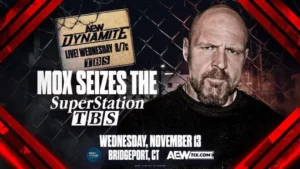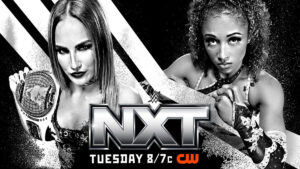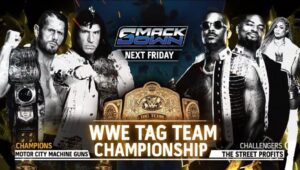During the fifth generation of gaming consoles, wrestling video games appeared on multiple platforms. Last time, we looked at some of the classics on the original PlayStation, but it wasn’t the only proverbial dog in the fight. Enter the Nintendo 64, which was a massive leap forward for arguably the most prominent name in the industry. With the introduction of this console came massive innovations for some of the most popular franchises, in addition to new experiences that, up until then, were improbable.
This wasn’t to say that the Nintendo 64 was perfect. Despite housing a number of games that are still fondly remembered, it continued to utilize cartridges, which many in the gaming industry considered to be archaic. Keep in mind that this was when more and more companies were shifting toward compact discs as the medium. They saw cartridges as limiting, which led to fewer developers allocating resources to the N64. However, it’s important to look at the console from a historical perspective.

Nintendo 64
Released in Japan and North American in 1996, the Nintendo 64 was named after its central processing unit. Boasting a 64-bit CPU, not to mention a unique architecture that continues to make realistic emulation a challenge in the current era, the N64 became one of the hottest gifts for the holiday season. This was bolstered by its emphasis on 3D graphics, not unlike the original PlayStation. Keep in mind that, during this time, gamers were accustomed to titles that existed on two-dimensional planes. In the mid-to-late 90s, the addition of a third dimension was mind-blowing.
In addition to 3D entries in long-standing franchises such as “Super Mario” and “The Legend of Zelda,” the N64 became home to instant classics. Titles including “Banjo-Kazooie,” “GoldenEye 007,” and “Super Smash Bros.” helped make the aforementioned platform a mainstay. It was also home to several wrestling video games; depending on who’s asked, the N64 provided the best offerings. Here are some of the classics that you most likely remember. If not, it’s recommended that you give these a try in any way possible.

WCW vs. nWo: World Tour
The line of Asmik Ace and AKI wrestling video games, published by THQ, on the Nintendo 64 begins here. “WCW vs. nWo: World Tour,” which was released in North America in 1997, is now regarded as a template. Its ideas are rough and its presentation is bare bones. In fact, the inclusion of wrestling entrances wouldn’t be made a possibility until the next WCW game in this line. However, for the time, it was one of the better titles that any gamer or wrestling fan could get their hands on.
In addition to a line of WCW stars, fans could play as a handful of members from the nefarious New World Order. The most unique addition, however, was the series of original fighters that the developers incorporated. These were easter eggs of sorts, as these stars shared movesets of real-life wrestlers. Black Widow was based on Manami Toyota, Saladin was inspired by Abdullah the Butcher, Hannibal bore a resemblance to Hayabusa; these were just a few examples that wrestling historians can pick out.
From a gameplay standpoint, “WCW vs. nWo: World Tour” is sound but light on content. Grapples and strikes work well, and while matches can be fun, additional modes are scarce. Its main campaign mode, the “League Challenge,” allows players to fight through different promotions. By winning each challenge, the player will unlock a wrestler based on each. “World Tour” may not be one’s first choice, as far as N64 wrestling video games are concerned, but it established a foundation for Asmik Ace and AKI to build upon.

WCW/nWo Revenge
One year later, Asmik Ace and AKI returned to the fold with “WCW/nWo Revenge.” Released in 1998, this game came out during arguably the hottest period for World Championship Wrestling. In addition to the New World Order, WCW boasted credible heroes for fans to get behind. As such, it only made sense that “Revenge” became the best wrestling game to bear the WCW license.
“WCW/nWo Revenge” featured the same template of gameplay as its predecessor but in a more refined way. Moves felt smoother than they did in “World Tour” and the overall difficulty became more balanced. It also retained some of AKI’s unique quirks, including a cast of original characters. Stars such as Dr. Frank and the more iconic AKI Man showed that while this game took itself more seriously compared to “World Tour,” it wasn’t too wrapped up in itself to cut loose.
What made “WCW/nWo Revenge” worthwhile was the host of improvements made since “World Tour.” These included but weren’t limited to multiple arenas and the ability to change wrestlers’ attires. Seeing as how “Revenge” didn’t feature a traditional create-a-wrestler mode, the latter was the most fans had at the time. Throw in a “Championship Mode,” which features tournaments where players could fight for WCW’s host of titles, and it’s easy to see why “Revenge” is still fondly remembered.

WWF WrestleMania 2000
THQ wouldn’t work with World Championship Wrestling for long, as they acquired the World Wrestling Federation license prior to the new millennium. Enter “WWF WrestleMania 2000,” which was released in the fall of 1999. Asmik Ace and AKI continued the work they started with the WCW titles, bringing with them the same game engine. Though the “WrestleMania 2000” pay-per-view may not be the most fondly remembered, the N64 game associated with it remains solid.
From a customization standpoint, “WWF WrestleMania 2000” was a leap forward from its N64 predecessors. The inclusion of a create-a-wrestler made it possible for players to develop unique creations. It also included assets to allow for the creation of established wrestlers. Furthermore, new match types were added and players were able to bring to life their own championship titles. The area where players spend the most time was the “Story Mode,” which included championship matches, feuds, and the like.
By this time, Asmik Ace and AKI had the formula for N64 wrestling video games figured out. “WWF WrestleMania 2000” took everything that made the previous WCW titles good, eliminated many of the hiccups, and continued to build from there. If not for the last title in this column, one may consider “WrestleMania 2000” the best wrestling game the N64 had to offer. Even so, this stands as another title worth revisiting or experiencing for the first time.
WWF No Mercy
When discussing wrestling video games for the N64, few are as well-received as “WWF No Mercy.” Released in 2000, the last of the Asmik Ace and AKI-developed wrestling games on the console became nothing short of legendary. It’s probably safe to say that even non-wrestling fans had this in their collection. This title became a staple of Nintendo’s first 3D-based system. It took everything that made the previous N64 grapplers great and amplifying them several times over.
From visuals to sound to creative suites, “WWF No Mercy” was a benchmark in wrestling video games during its time. While its overall gameplay won’t be unfamiliar to those that played “WrestleMania 2000, it provided new techniques such as running grapples. Furthermore, the “SmackDown Mall” served as a hub for the game’s unlockable content, which included attires, weapons, and additional wrestlers. There was plenty of content to sink one’s teeth into.
Include new additions like “Championship Mode” and “Survival Mode” and it’s easy to see why “WWF No Mercy” became a hit.
It’s also one of the most supported games following its release. Twenty years after the fact, it boasts a passionate modding community that has rebuilt the game in numerous ways. They added new textures, developed modern rosters, among other endeavors to keep the game relevant. If this isn’t dedication, one would be hard-pressed to determine what is.
While there have been other wrestling video games on the Nintendo 64, the line of titles developed by Asmik Ace and AKI is unquestionably the most memorable. They provided fans with arcade-like experiences; games that were easy to pick up and play but took time to truly master. Even with nostalgia aside, these are great games to experience. Next time, we will shift our focus to handhelds, as we revisit some of the wrestling games that hit the Game Boy family of systems.
Check out past entries from the “Revisiting Wrestling Video Games” series!
Stay tuned to the Last Word on Pro Wrestling for more on this and other stories from around the world of wrestling, as they develop. You can always count on LWOPW to be on top of the major news in the wrestling world, as well as to provide you with analysis, previews, videos, interviews, and editorials on the wrestling world.






